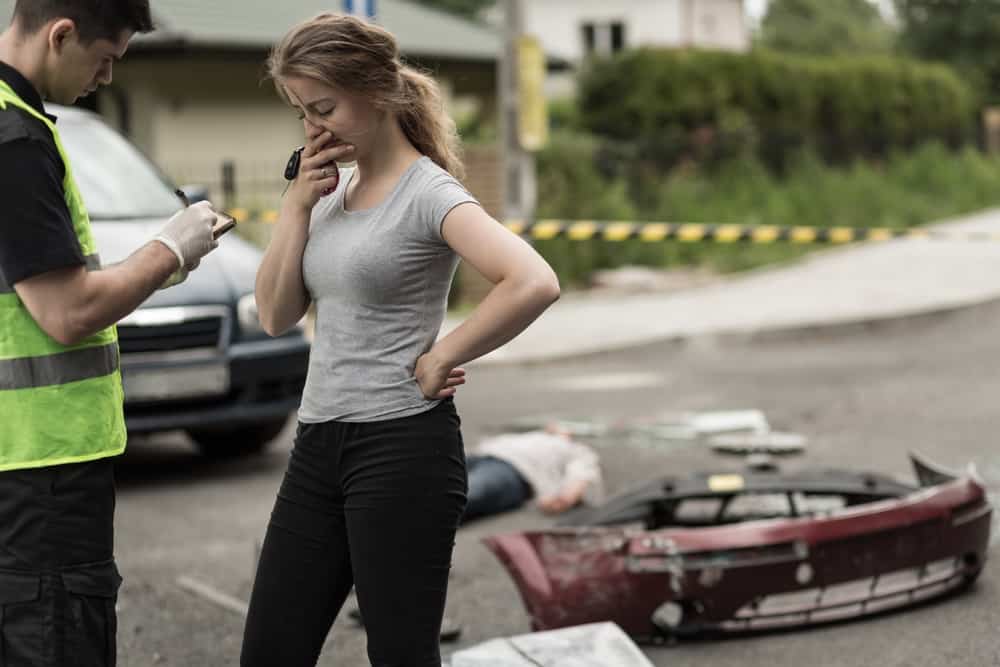One of the scariest imaginable scenarios is a head-on collision with another car. When striking in the front, the force of impact is intensified, and the sudden loss of speed can be too much for the human body to handle. This can lead to some of the most serious car accident injuries, including being thrown through windshields and worse. If you are wondering what to expect physically after a car accident of this sort, it can vary based on the exact circumstances of your crash, but there is likely some recovery necessary.
What Is the Safest Seat in the Car?
There is some debate as to whether the front or the back seat is safer in a head-on collision. Conventional wisdom has said that the middle seat in the rear of the car is the safest, as the person there has the most room between them and the dashboard and any doors, leaving them a larger “crush zone” in a crash.
However, in newer models of cars, there is some thought that the front seat may have safety benefits for adults. Automobile safety initiatives have focused heavily on the driver and passenger in the front seat, and safety features often account first for this. Back seats pose the unique risk of being behind another person and a chair, often without airbags.
Ultimately, the most important thing you can do to avoid car accident injuries is the use of proper seatbelts and restraints for children.
Common Injuries from Head-On Collisions
Depending on the speed and angle of the crash, there can be severe outcomes from a head-on collision, including passengers being crushed under the dashboard, cars rolling off the road, and passengers being ejected from cars. While physical trauma is expected in all collisions, there are certain injuries that are most commonly seen when a collision is head-on.
When thinking about what to expect physically after a car accident, fractures, severe cuts and lacerations, burns, and internal injuries and bleeding are all very common. If the car is crushed in any way, a person can be trapped inside the vehicle, which exerts pressure on organs and allows a greater loss of blood before they can be removed. Conversely, if someone is ejected from the vehicle, they will experience these during the crash and then again when they impact the ground. While some of these can be mild, severe versions of these injuries can be life-threatening.
The most common area injured in a head-on collision is the chest. As your seatbelt protects you from leaving the vehicle, it can also exert pressure on the chest, sometimes enough pressure to crack a rib or another bone. This pressure can even be severe enough that it causes internal bleeding, known as seatbelt syndrome, or muscular damage.
Brain and Spine Injuries
Brain and spine injuries are serious and common injuries after a car accident. Because a head-on collision usually occurs at high speed, passengers are very susceptible to concussions due to the unnatural movement. In addition, the jolting the body does may cause the head to make contact with a dashboard or window, causing a traumatic brain injury. Small tears and contusions on the brain can lead to serious issues down the line. If anything, like debris or other car parts, come through the windshield, it’s possible they can puncture the skull, leaving permanent effects on the passenger.
The back, neck, and spine are also highly vulnerable. When a person is thrown forward and then backward at unnatural speeds, the spinal column is forced beyond its normal capacity, causing injuries that range from minor to severe. Whiplash is very common in these collisions, along with slipped discs, strained muscles, and tears to soft tissue. In severe cases, the spinal cord can be impacted and lead to paralysis or other long-term effects.
Aftermath of a Head-On Collision
If you have been involved in a head-on collision, you will likely need at least minor medical treatment on the scene. It is also important to see a chiropractor after a car accident like the specialists at AICA Orthopedics. These experts can help you understand what to expect physically after a car accident and create a diagnosis and treatment plan that is built around your needs and goals. Depending on your injuries, your recovery may have a long timeline, but AICA Orthopedics offers a multidisciplinary team that will help you to heal efficiently, safely, and as quickly as possible.





